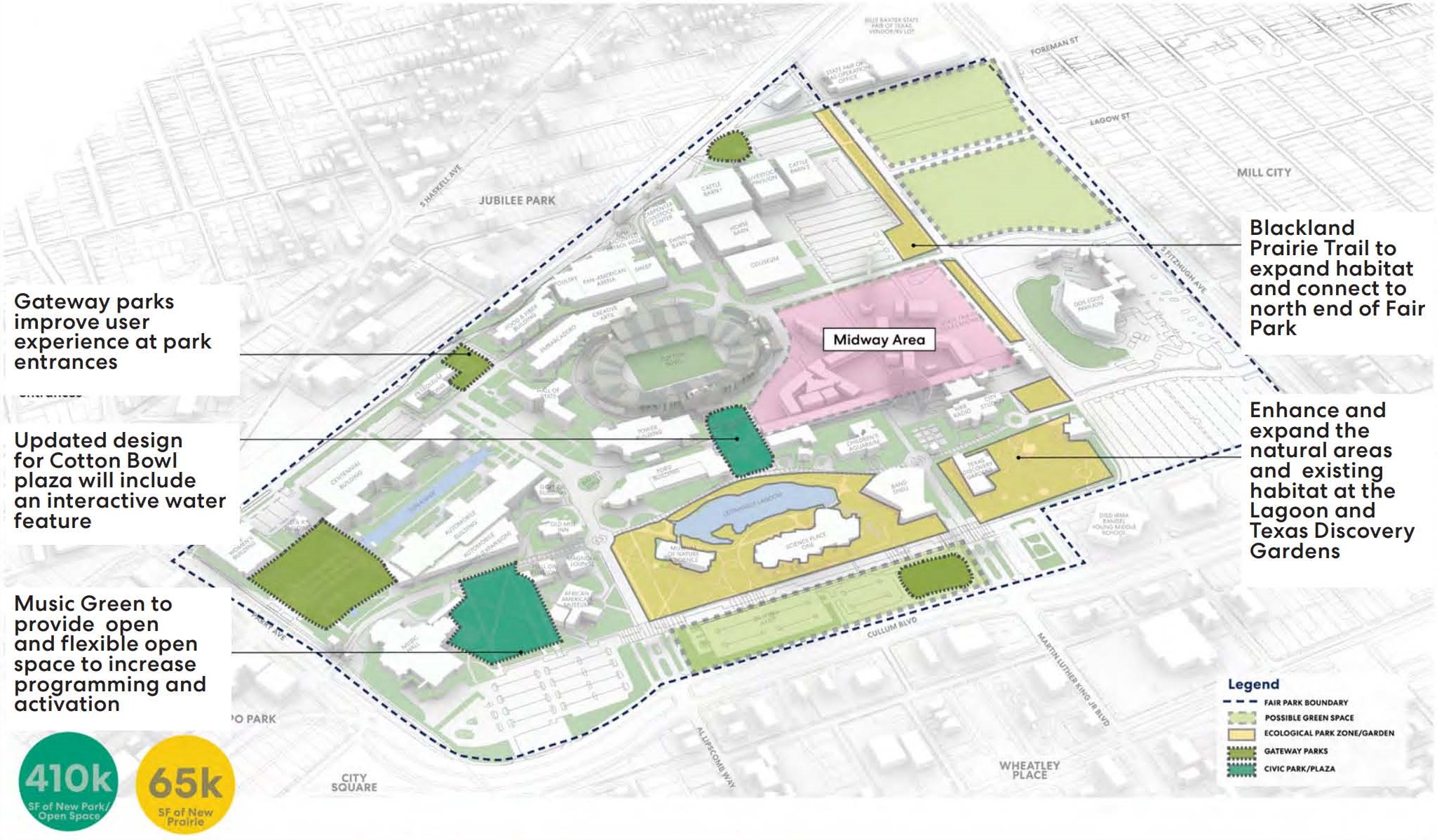Last night, at a community open house at the Briscoe Carpenter Livestock Center in Fair Park, consultants working on a new master plan for Fair Park presented some of their findings to the public. You can peruse the presentation here.
The process for the new master plan, which is being led by the architecture and design firm Perkins and Will, was set in motion last year, when the city handed over management of the historic park to the private management group Spectra. One of the key conditions of the transfer of management of the park to the private group was that they would quickly move toward building a new neighborhood park that could begin to break down physical and symbolic barriers between Fair Park and the surrounding neighborhoods. According to last night’s presentation, the final master plan will be rolled out this February and construction on the new neighborhood park will start next spring.
The draft version of the plan identifies three potential locations for a new neighborhood park, but the greening vision goes beyond that. The plan attempts to tackle issues like pedestrian connectivity within the park and with the surrounding communities, a general lack of green space, and the need for more flexible, programmable spaces in Fair Park. Here are some of the highlights:
The plan identifies a potential for adding more than 410,000 square feet of new parks and open spaces. This includes the neighborhood park, which it suggests be located either near the intersection with Martin Luther King Jr. Blvd or toward the back on the park on the massive parking lots that abut the Dos Equis Pavilion. But it also identifies areas where additional greenspace could be introduced to Fair Park’s concrete-dominant landscape. These include green “entry parks” near the entrance ways to Fair Park, an expanded and programmable “Music Green” adjacent to the Music Hall, and expanded blue/green landscaping around the lagoon and Texas Discovery Gardens.
The plan also suggests adding a 65,000-square-foot “Blackland Prairie Trail” that would stretch along the outer edge of the park between the midway and the buildings used during the State Fair for livestock shows. There are also provisions made for increasing the tree canopy within the park, adding water features, and improving stormwater drainage. This includes a suggested water feature to help spruce up the currently drab plaza outside the Cotton Bowl. The scale of the potential “greening” of Fair Park underscores just how massive the site is, and if all of these ideas can be implemented, the overall look and feel of Fair Park could be radically transformed.
In addition to adding more “park” to Fair Park, the plan attempts to address some of the access barriers and programming obstacles. It suggests constructing new parking garages to help eliminate the need for surface level parking, but also suggests that the first level of those garages have street level uses. It proposes a reconstitution of the fence surrounding Fair Park to eliminate barriers between the surrounding neighborhoods and areas within Fair Park’s footprint that could be re-purposed as neighborhood parks. The plan also lays out a proposed pedestrian zone within the park, and proposes a series of new buildings or building expansions and renovations that will allow for more flexible and programmable space within the park.
In all, the plan looks like it tackles many of the fundamental concerns with how Fair Park has historically operated. It incorporates and improves upon many of the ideas included in the 2003 Comprehensive Plan, and unlike that plan, this latest effort has a clearer path for implementation: Fair Park’s new management group as well as the non-profit Fair Park First, which will lead the funding efforts. The plan will be refined as its authors continue to hold meetings with stakeholders and neighbors, and it will be presented to the city council this February or March.






